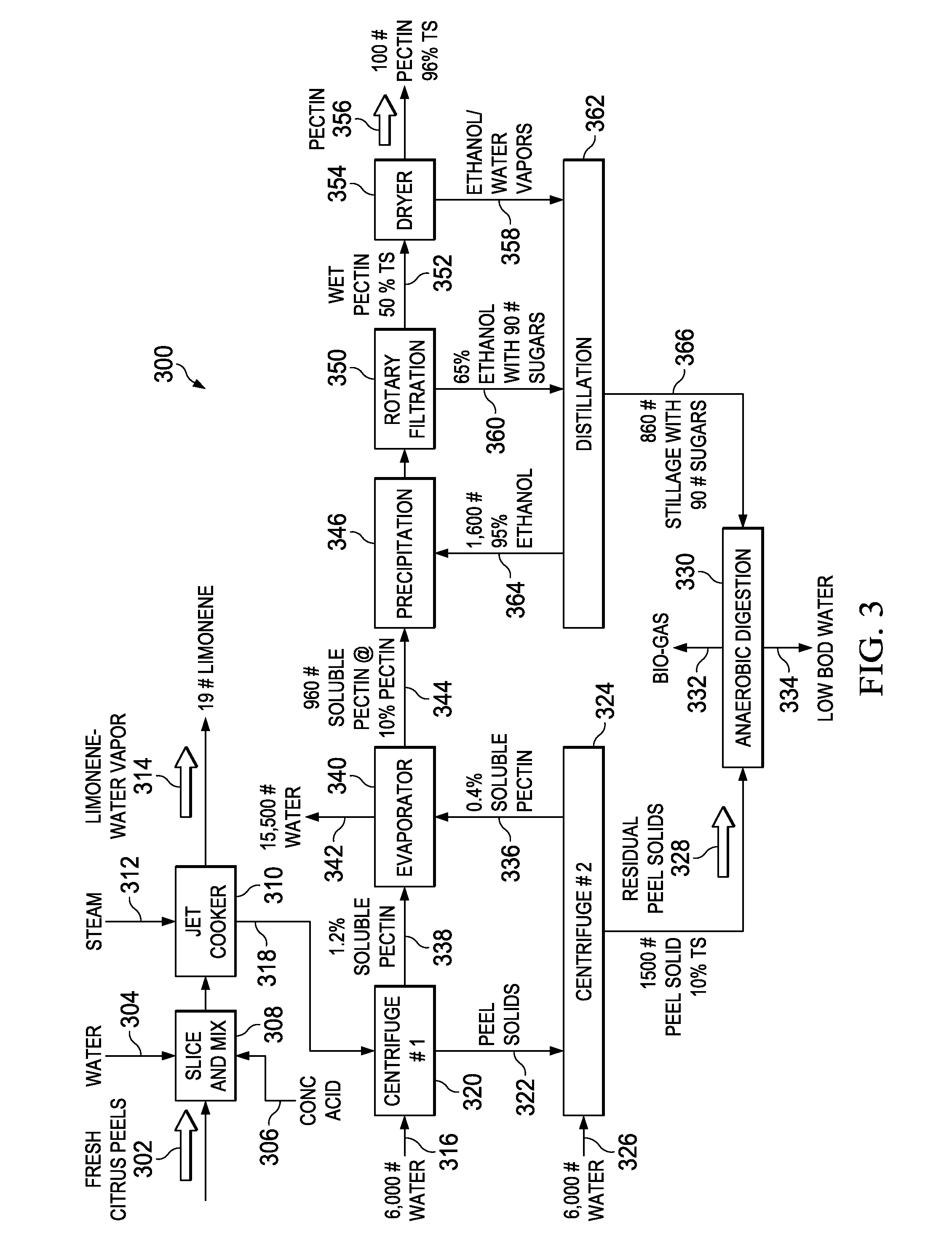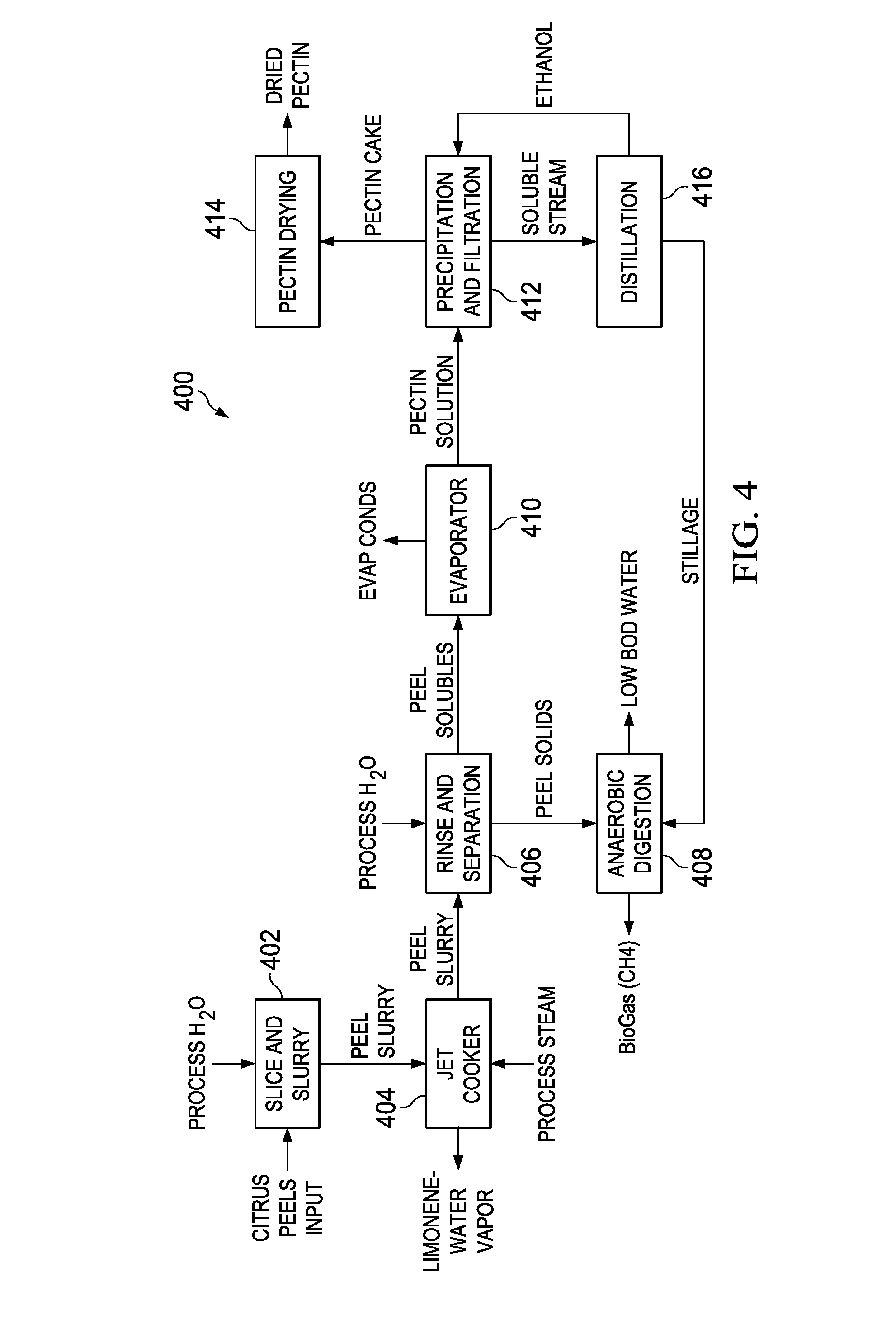Sustainable conversion of citrus peel waste
a technology of citrus peel and waste, which is applied in the field of sustainable conversion of citrus peel waste, can solve the problems of large capital equipment and energy costs associated with the production and distribution of cattle feed from citrus peel waste, the inability to recover large amounts of capital equipment and energy costs, and the inability to achieve high valu
- Summary
- Abstract
- Description
- Claims
- Application Information
AI Technical Summary
Benefits of technology
Problems solved by technology
Method used
Image
Examples
Embodiment Construction
[0024]FIG. 1 depicts a block diagram of an embodiment of the limonene removal process 100 according to the invention disclosed herein. In one embodiment, a significant volume of the citrus peels have been significantly dewatered by pressing after juicing operations by means as known in the art. In one embodiment, pressing is accomplished using a hammer mill. Pressing increases the total solids content for the citrus peels to make anaerobic digestion more efficient. A higher total solids content reduces the volume of peel waste received by the anaerobic digestion reactor and thereby could reduce the size of the reactor required from implementation of the invention disclosed herein. Pressed peel waste (i.e. lower moisture content of less than ˜65%) is typically used for ensiling processes (pickling of orange peels). Ensiling processes are utilized to prepare and store orange peel waste for off-season digestion.
[0025]As shown in FIG. 1, citrus peels or orange peel waste (OPW) 102 are m...
PUM
| Property | Measurement | Unit |
|---|---|---|
| temperature | aaaaa | aaaaa |
| pressure | aaaaa | aaaaa |
| pressure | aaaaa | aaaaa |
Abstract
Description
Claims
Application Information
 Login to View More
Login to View More - R&D
- Intellectual Property
- Life Sciences
- Materials
- Tech Scout
- Unparalleled Data Quality
- Higher Quality Content
- 60% Fewer Hallucinations
Browse by: Latest US Patents, China's latest patents, Technical Efficacy Thesaurus, Application Domain, Technology Topic, Popular Technical Reports.
© 2025 PatSnap. All rights reserved.Legal|Privacy policy|Modern Slavery Act Transparency Statement|Sitemap|About US| Contact US: help@patsnap.com



